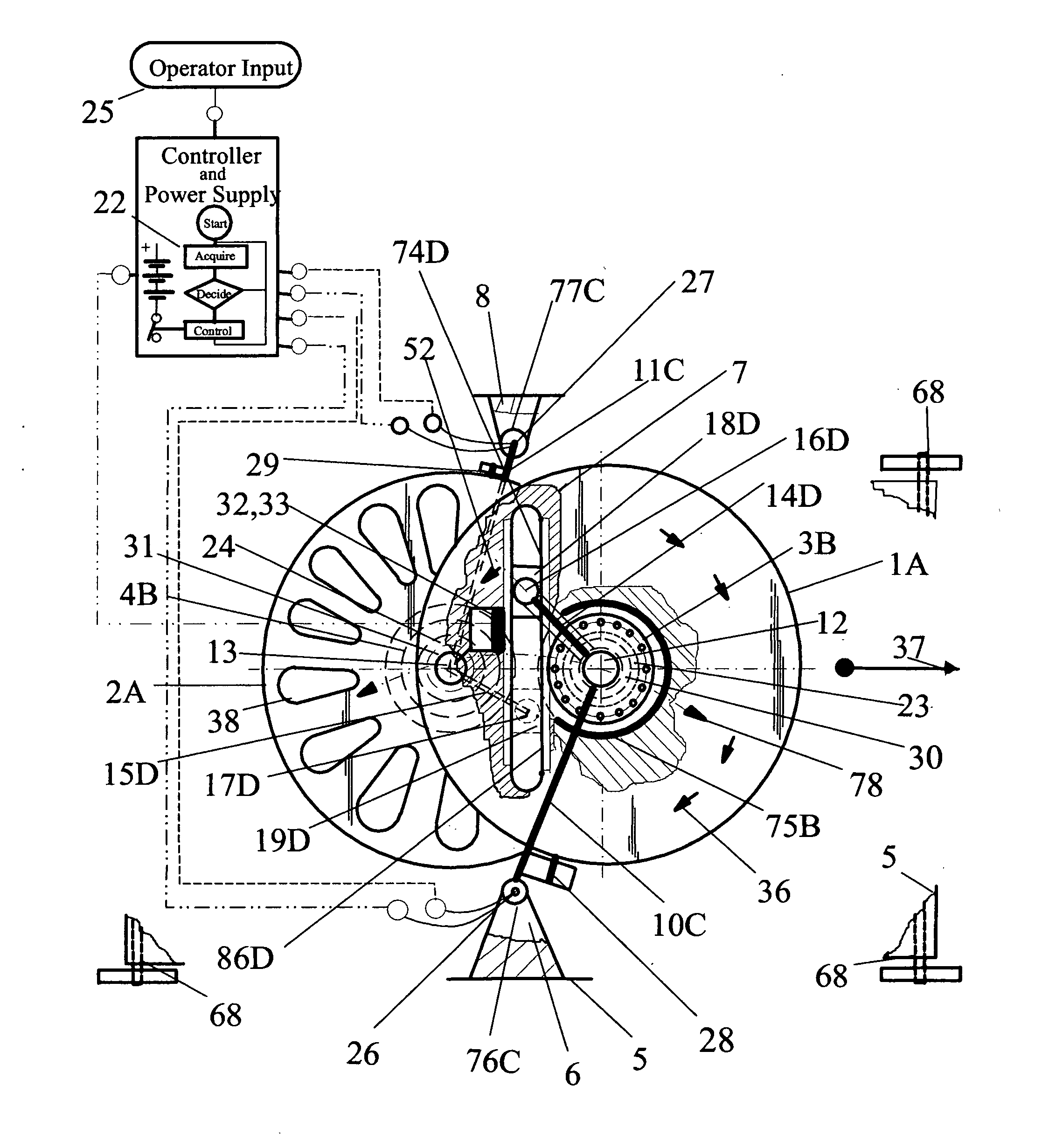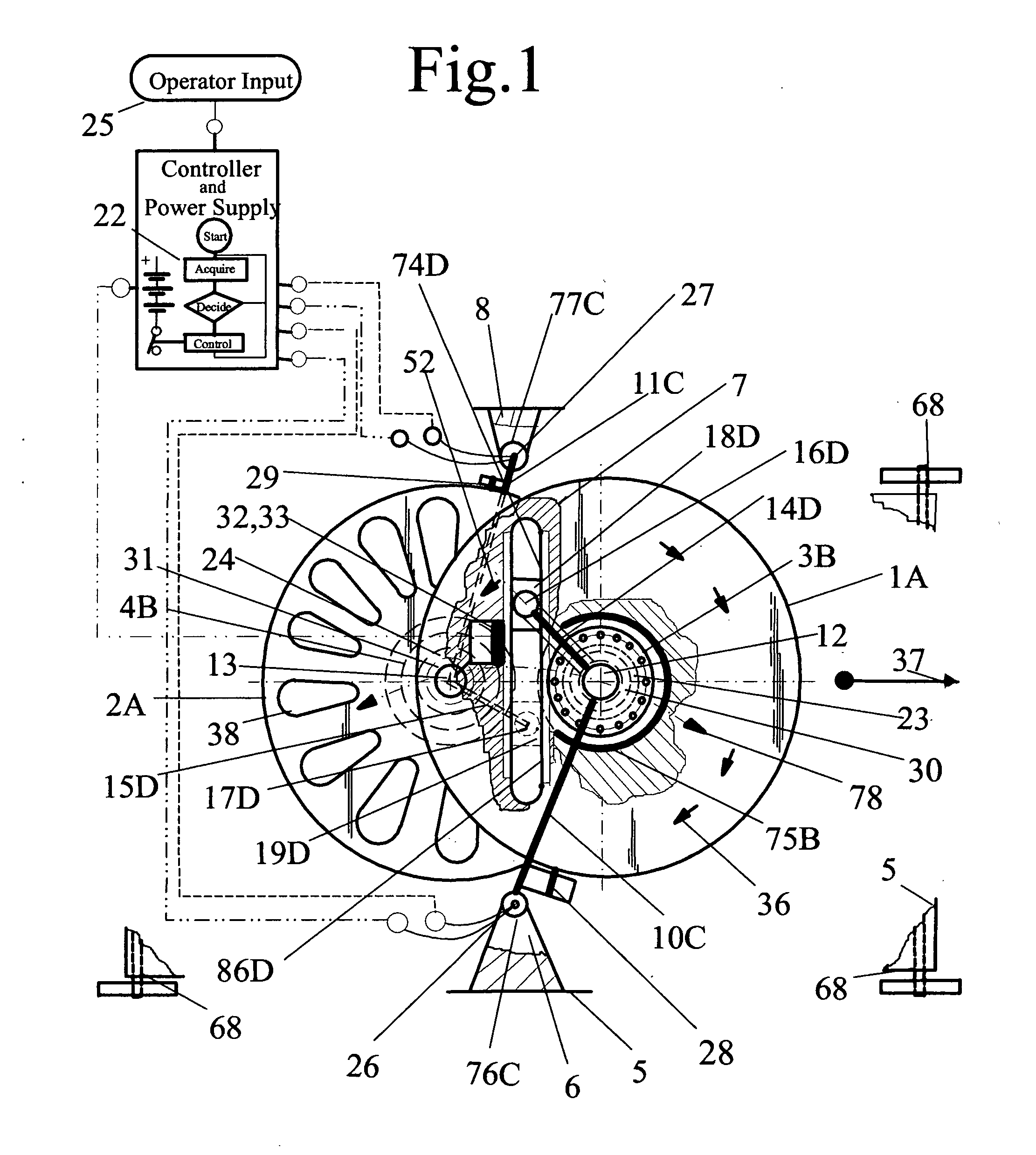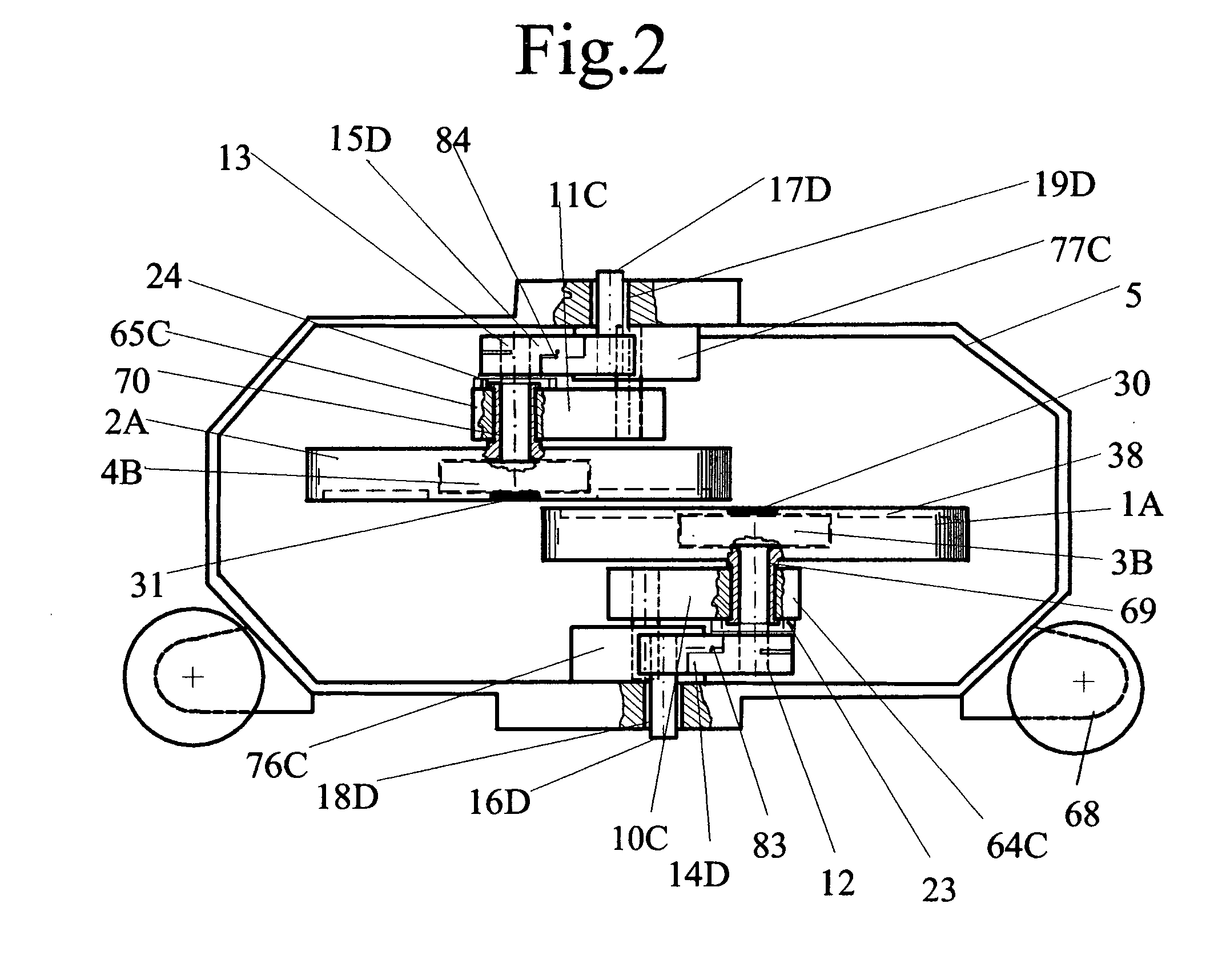Method and device for self-contained inertial vehicular propulsion
- Summary
- Abstract
- Description
- Claims
- Application Information
AI Technical Summary
Benefits of technology
Problems solved by technology
Method used
Image
Examples
Embodiment Construction
[0022]Referring to FIG. 1, the self-contained propulsion device comprising pairs of flywheels, 1A and 2A, having parallel axial orientation and linear displaceable axial spacing. Each individual flywheel of the flywheel pair, in comparison to each other axis, have a linear mutual separating motion 78 followed by a re-approaching motion 78 and opposite direction of rotation 36, therefore, the linear motion of the flywheel pair is a kinetic energy dependent mutual time sequential diametrically opposing alternating linear motion. The linear and rotational motion of the flywheels are progressively changing non-uniform movements which accomplishes the net potential energy work output propulsion thrust drive propelling the vehicles' (68) motion. The opposite direction of flywheel rotation accomplishes the cancellation of rotational torque, which prevents the turning of the device around its axis. The turning action, however, is used to steer the device by varying the rotational parameters...
PUM
 Login to View More
Login to View More Abstract
Description
Claims
Application Information
 Login to View More
Login to View More - R&D
- Intellectual Property
- Life Sciences
- Materials
- Tech Scout
- Unparalleled Data Quality
- Higher Quality Content
- 60% Fewer Hallucinations
Browse by: Latest US Patents, China's latest patents, Technical Efficacy Thesaurus, Application Domain, Technology Topic, Popular Technical Reports.
© 2025 PatSnap. All rights reserved.Legal|Privacy policy|Modern Slavery Act Transparency Statement|Sitemap|About US| Contact US: help@patsnap.com



